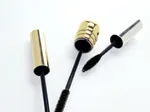Exclusive extract from The Last Anniversary (Macmillan), written by Liane Moriarty.
Sophie had been going out with Thomas for nearly a year when she decided to break up with him. The decision was the result of weeks of agonised self-analysis. Yes, she loved him, but did she love him for the right reasons?
She knew, for example, that is was right to love a man for his kind heart, but wrong to love him for his bank account. It was fine to love him for his gorgeous blue eyes, but shallow to love him for his tanned muscles, whether they were as a result of his work as a shearer or an acrobat or from being in a wheelchair.
But was it right or wrong to love a man for his marzipan tart? Thomas could cook like an angel and Sophie is a woman who likes her food. Watching him chop garlic could make her weak with desire and eating a slice of his marzipan tart was equivalent to a multiple orgasm. His seafood risotto brought tears of joy to her eyes. But wasn’t that a gluttonous, superficial basis for love? Especially when you sometimes secretly, shamefully wished he could just drop off the marzipan tart rather than having to stop and tell you some long, worrying story about his car registration.
And was it wrong to love someone because he was the grandson of the Munro baby and you’d always been slightly obsessed with the Munro Baby Mystery? Wasn’t that like loving someone because he was a member of the Royal Family, when you were really meant to fall in love with him when he was disguised as a simple peasant and then be pleasantly surprised when he turned out to be a prince?
It seemed to Sophie that she didn’t love Thomas the way he deserved to be loved. He deserved to be with a woman who adored that fraught, scrunched-up expression he got whenever he had to do a difficult reverse park. He deserved a girl who thought it was cute the way he scrupulously read every line of the passenger safety card every time he flew and took his responsibilities so seriously that when he was seated in the exit row he spent 10 minutes asking a bemused flight steward questions about exactly what he’d need to do with the exit door in the unlikely event of an emergency.
More importantly, Thomas deserved to be loved the way he loved Sophie. Once, she’d found on his computer a document called ‘Sophie’, which she’d opened, of course, to find a list of reminders about how to be a good boyfriend. As if Sophie was a puzzle he could solve if he just followed the rules. It said things like: ‘If S. suggests outdoor activity, don’t mention possibility of rain. Pessimistic.’ ‘Don’t say “Whatever you feel like” when S. asks about weekend plans. Irritating.’
Reading it made Sophie cry.
Thomas was good-looking, intelligent, very smart, and occasionally, when he relaxed, quite witty, but Sophie had begun to feel terrified that she might be unfaithful to him. Once they had been at dinner and a waiter had said to Sophie, “Cracked pepper with that?” and she’d met his eyes and felt such a jolt of sexual attraction she had to look away.
Not that she hadn’t enjoyed their sex life. It was just that sex with Thomas was so very pleasant and … clean. While he was giving her generous amounts of patient, gentlemanly foreplay she’d find herself thinking wistfully that she’d quite like to be thrown on the bed and ravished. Of course, if she’d ever told Thomas that he would have dutifully thrown her on the bed, carefully so as to not bump her head, no doubt with the same worried expression on his face as when he reverse parked.
Wasn’t there more to love than this friendly, slightly irritable affection? Wasn’t it morally wrong to stay in a relationship if you didn’t feel weak-kneed passion for your partner? Wasn’t there something noble about leaving a nice comfortable relationship in your thirties and heading off on a quest for The One?
This was a deluded train of thought that had led Sophie to recklessly break up with the nicest man she had ever dated.
Her timing for breaking up with him had been quite bad. Quite spectacularly bad, actually. She had deliberately picked a Friday because she thought it would give him the weekend to get the worst of his shock out of the way. He was a pathologist and she didn’t want to be responsible for him misdiagnosing somebody’s specimen. Unfortunately, by horrible coincidence, Thomas had had his own plans for that particular Friday.
It really wasn’t her fault. How was she to know they were booked on an a flight to Fiji that afternoon for a surprise holiday, which would begin with a marriage proposal on a white sandy beach bathed in moonlight while a string band wearing traditional Fijian dress serenaded them? How was she to know that at least a dozen friends and family members were excitedly involved in this careful, but not exactly covert, operation? There were the girlfriends who had secretly packed her bag with her sexiest lingerie; the various people who had been recruited to water her plants; her boss, who had agreed to give her time off work.
Naturally, all these people who had been sworn to secrecy had sworn at least another three people to secrecy too. It was annoying to discover that so many people knew about her forthcoming marriage proposal before she did, but that, of course, as Thomas so passionately pointed out, was no longer relevant.
“I need to talk about something,” she said bravely, on their way to what she thought was a new seafood restaurant in Brighton, although actually they were on their way to his sister Veronika’s place, who was on standby to drive them to the airport.
“Well I need to talk to you about something too!” said Thomas, rather gleefully she realised later. “But you go first,” he said generously.
So she went first and his eager face had crumbled and cracked like a six-year-old trying not to cry after he’d scraped his knee and Sophie had to look out the car window at the passing traffic and press a guilty fist against her stomach.
What would happen if he’d gone first?
She would have put it off a week of course and gone to Fiji. And when he proposed she would have said yes. How could she possibly have said no? It would have been farcical, with Thomas dolefully brushing white sand off his knee and signalling to the string band to stop playing by slicing a finger across his throat. Besides which, she loved nothing more than a romantic marriage proposal!
“I’m going to look like a stupid fool,” he had moaned with his head down, hugging the steering wheel, after he’d pulled over in a no-stopping zone (evidence of his distraught state of mind that he didn’t even check the sign) and revealed all his thwarted plans in a bitter, triumphant rush. He even pulled out the box with the ring heartbreakingly wrapped in bubble-wrap and hidden in a pair of black socks in the zippered compartment of his carry-on luggage.
“You’re not going to look like a fool. I’m going to look like a bitch,” she had said, while she guiltily patted his hand and looked warily at that (really rather gorgeous, unfortunately) ring that had come so close to being hers and wondered if it would be in very poor taste to ask if she could try it on, just to see how it would have looked.
“Everybody loves you Sophie,” Thomas had said bitterly, “No matter what you do.”
She’d been flattered to hear that everyone loved her and then horrified at her own narcissism while poor Thomas was having his heart broken.
Actually people had been upset with her, especially those involved in planning the secret proposal, as if she’d rejected them too. Thomas’s sister Veronika, who was the reason Sophie had met Thomas in the first place, didn’t speak to her for 11 months. (This was actually something of a relief, as Veronika could be hard work and Sophie found it difficult to show sufficient gratitude when Veronika magnanimously decided to forgive her.)
It seemed that Sophie was both greedy and wasteful. Greedy for wanting something more than a perfectly nice, intelligent, good-looking man when she was in her mid-thirties and lived in Sydney, gay capital of the world. Wasteful of a perfectly lovely, expensive, carefully planned marriage proposal.
Of course, she’d got her comeuppance.
Newsletter conversion description. Get the latest in your inbox.






























.png?resize=380%2C285)
.jpg?resize=380%2C285)



.png?resize=380%2C285)


